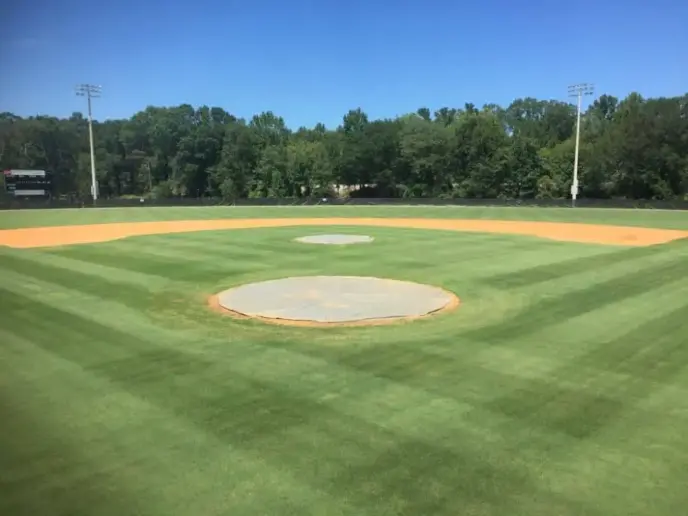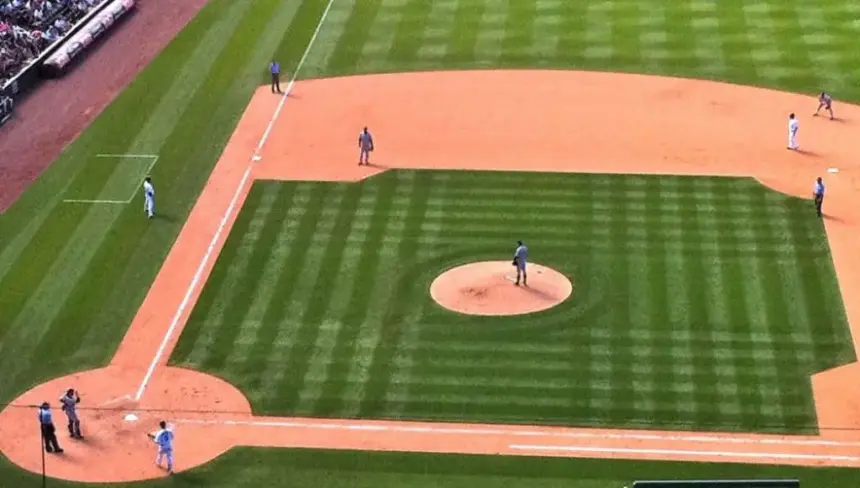How Much Does It Cost to Build a Baseball Field? (Answered!)
For well over a century, baseball has been capturing the hearts and minds of millions across North America.
Generations grew up watching or taking part in America’s favorite pastime.
Baseball fields are one of the pillars of local communities and places where people gather to share memorable experiences.
Building new baseball grounds is essential in keeping new generations engaged and interested in sports.
However, baseball fields have certain requirements that often make their construction a bit expensive.
The field design is usually more complex than for those used for football or soccer.
The answer to the question of how much does it cost to build a baseball field is not simple and depends on a lot of things.
Below, I’ll delve deeper into the main factors that dictate the price of such an endeavor.
Table of Contents
How Much Does It Cost to Build a Baseball Field?

Surely, you’ve read about the costs of the modern MLB ballparks going through the roof.
The price of building new major league stadiums now routinely goes over a couple of hundreds of millions of dollars.
Of course, the majority of newly-constructed baseball fields aren’t anywhere near these figures.
The required investment varies greatly depending on the type and size of the ballpark that is being built.
Building a neighborhood baseball ground, a Little League venue, or even a backyard baseball field all have certain requirements that dictate the costs.
If you have enough space on your land, you can construct a basic, but perfectly playable, baseball field for no more than $15.000.
Before you even start, you should take into account a couple of factors to get an idea of how big the budget will be.
Current Condition
Building a new field from the ground up will cost much more than only adapting the field that’s already there and needs some minor work to make it playable.
Terrain and Location
Leveling and the preparation of the land are crucial for creating a safe and playable baseball field. However, certain terrains will present more of a challenge.
If you’re building a baseball ground on terrain with high rock or sand density, be prepared for higher costs of land works.
The soil conditions also dictate what kind of drainage and irrigation your field will need. The bad drainage means that you’ll have to haul in massive amounts of dirt.
For an average varsity baseball field, the earthwork costs can go up to $30.000. Don’t forget that you’ll need screened topsoil for the infield area.
The price of the screened topsoil per cubic yard is around $20. The more expensive option is clay which is in the $35-40 range per cubic yard.
Type of Surface
The playing surface can be natural or artificial. Natural turfgrass field is cheaper but will require more maintenance later on.
Going with natural grass, without adding topsoil or sod is the least expensive option and will set you back $0.60-0.90 per square foot.
If you opt for a natural surface but go with full sand and drainage system, the costs will rise up to $5 per sq. ft.
The artificial synthetic surface can drive the price up to $10/sq. ft.
Size and Scale
Logically, the size and the scale of your planned baseball field will play a big part in the final cost.
The bigger the field, the higher the price.
Overall Design
The overall layout of the field and any potential additional features also play a big part in the building budget.
If you’re just building a baseball field in the backyard, you likely won’t need items such as scoreboards, dugouts, or bleachers.
On the other hand, various leagues on different levels of competition have certain requirements that need to be fulfilled so the ballpark can host official games.
Some of these features can be rather pricey. For example, a 600-seat bleacher can cost up to $80.000.
How Much Land Do You Need for a Baseball Field?

If you plan to build a baseball field, make sure that you have plenty of land available.
A full-size baseball field should have 330 feet down the foul lines from home plate to HR fence and 400 feet from home plate to center.
This amounts to roughly 3 acres of space. Of course, this is only fair territory.
You’ll have to also account for the foul territory down the foul lines and behind the home plate.
The sides of the official diamond are supposed to be 90 feet long with 127 feet, 3-3/8 inches across the diamond between the first and the third base.
The different levels of competition may require different dimensions of the field.
For example, for the Little League, the baseline needs to be only 90 feet with a bit over 84 feet across the diamond.
This means that you can build the Little League field on about 1.5 acres of space.
How Much Does It Cost to Maintain a Baseball Field?
Again, the cost of maintaining the baseball field depends on the type of field you’ve built.
One thing is certain, no matter the type of the ballpark, regular and proper maintenance will significantly reduce the costs and minimize the risk of injuries.
The largest share of maintenance costs belongs to the upkeep of the playing surface. As mentioned, natural grass is somewhat more expensive to maintain.
Yearly maintenance costs for the natural surface include fertilizers, herbicides, fungicides, aeration, and mowing.
Depending on the size of the field these costs can amount up to $50,000 per year as well as around 800 man hours.
The upkeep of artificial surfaces involves brushing and sweeping, disinfecting, carpet repairs, and deep cleaning.
Here the yearly costs can grow up to $40,000 and up to 350 total man hours.
Conclusion
Building a brand new ballpark is no easy task. It includes plenty of costs that may not be obvious at first.
Before asking yourself how much does it cost to build a baseball field, make sure to be certain of what exactly are you trying to accomplish.
As you can see the cost can be as low as $15,000 but also can easily reach millions.
The construction is often more complicated than for most other sports. The surface is not flat and the layout and design are somewhat complex.
However, this shouldn’t discourage you.
If you’re capable of securing the budget and willing to do some careful planning, a new baseball field can breathe a new life to the whole surrounding area.




